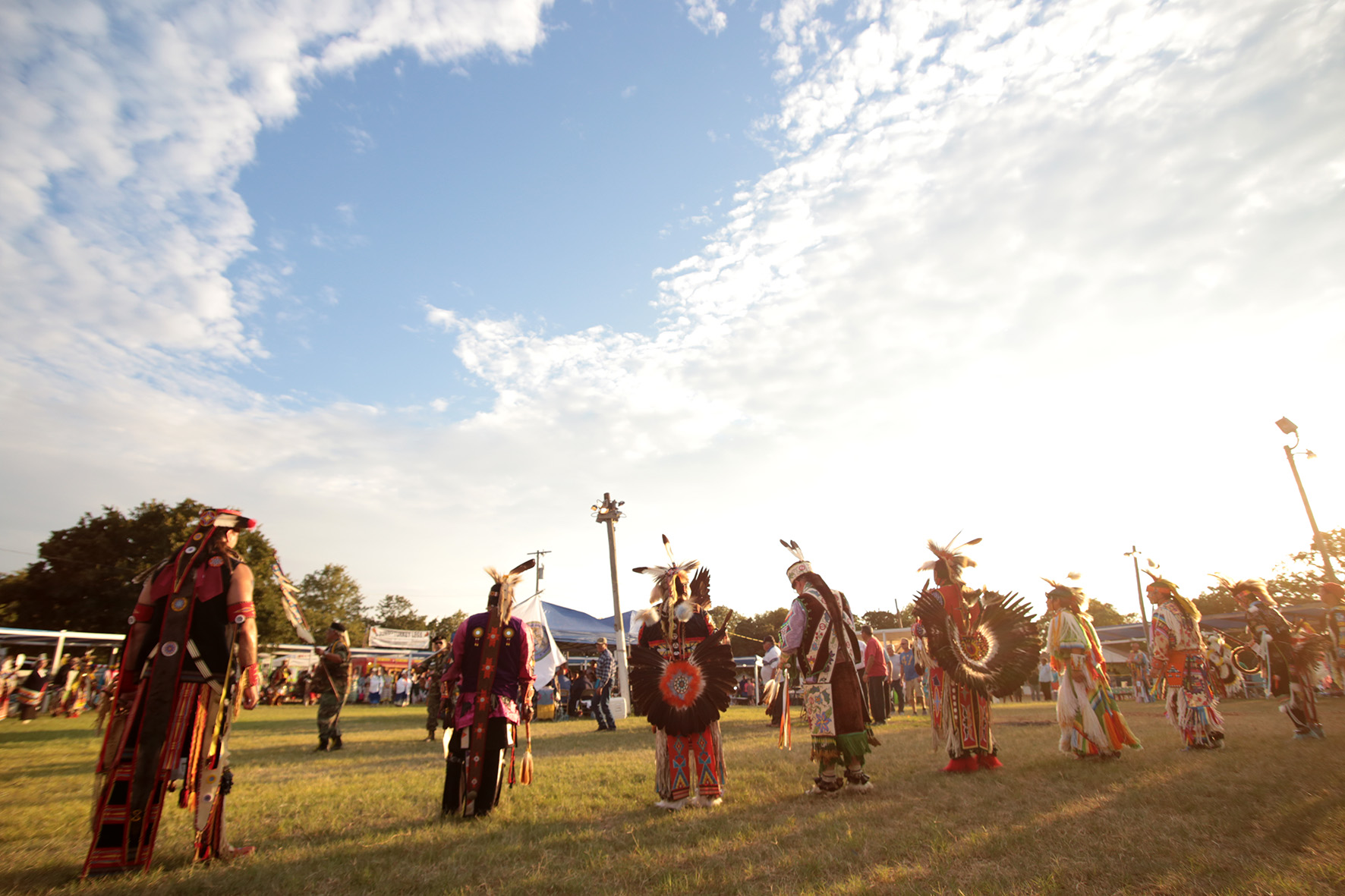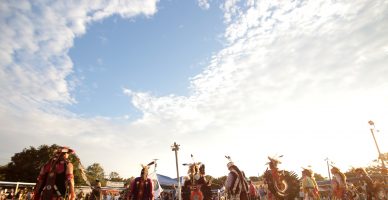OKLAHOMA: A Tribal Road Trip
Audio+ documentary, 27′, FR / ENG, 2018
by Ghislaine Heger. Production : Tokyo Moon (Switzerland)
Oklahoma seen from Europe. What comes to mind when we think of Oklahoma ? Probably not much. Where is it located on the map ? What is going on there ? We may remember Tim McVeigh and the bombing he was responsible of in 1995. At first sight, Oklahoma doesn’t draw the attention : monotone landscapes made of prairies and hills can’t compare with desert plains or spectacular views on canyons. It is easy to cross the State without being in raptures. Yet, in a time where President Trump supports the fact that the White people are the only legitimate to live in the United States, excluding the other ones wherever they come from, it is interesting to turn to those whose lands have been stolen from at the beginning : the Native American tribes. Before the State’s constitution in 1907, that land was called the Indian Territories. The settlers deported and cooped up numerous tribes there until they discovered there was oil in Oklahoma – and suddenly took over that place too. Today there are thirty-nine tribes who have been officially recognized there and it seems that cohabitation goes pretty well, even if the situation is quite atypical for there is no other State where as many nations are listed. Some counties are held by Native American tribes and are subject to their own laws and regulations. They do get some money from the federal Government, which is not enough to cover the expenses, therefore they plough the benefits they make from the casinos into their infrastructures and social services. Outside of the county limits, if someone doesn’t belong to a community, discrimination still exists – it is hard to find a job, some people get harassed or even get killed without investigation.
This work is meant to learn more about the traditions that bring the native nations together, their everyday life, their reality and their identities. Spotlight on a State that doesn’t make headlines.
This was recorded in 2017 and was meant to be an audio piece. This version allows to have subtitles, both in English and French.
OKLAHOMA : un road trip tribal
Reportage audio, 27′, FR / ANG, 2018
Réalisation : Ghislaine Heger. Production : Tokyo Moon (Suisse)
L’Oklahoma vu de l’Europe. Quelles sont les images qui viennent en tête lorsqu’on évoque cet État ? Probablement pas grand chose. Ni son emplacement sur la carte, ni son actualité. Peut-être se souvient-on de l’attentat commis en 1995 par Tim McVeigh. De prime abord, l’Oklahoma n’attire pas l’attention: son paysage monotone, composé de prairies et de collines un peu arborisées, n’offre pas de plaines désertiques, de vue spectaculaire sur des canyons. Il est aisé de traverser ces paysages sans extase, sans se retourner. Pourtant, à l’ère où Trump prône la légitimité des Blancs à s’imposer dans son pays, repoussant les étrangers d’où qu’ils viennent, il est intéressant de se tourner vers ceux à qui on a volé ces terres au départ, les Amérindiens. Avant la constitution de l’État en 1907, ces terres étaient appelées les territoires indiens. Les colons y ont déporté et parqué de nombreuses tribus, jusqu’à la découverte du pétrole: c’est alors que les Sooners se sont empressés de s’y installer. Aujourd’hui, alors que les trente-neuf tribus officiellement reconnues cohabitent sans trop de heurts avec les Blancs, la situation est des plus atypiques, car nul autre État ne recense autant de nations. Il existe des comtés réservés à certaines tribus, territoires sur lesquels ces dernières gèrent les services selon leurs propres lois. Pour les financer, elles reçoivent en partie des subventions fédérales et réinjectent massivement les bénéfices des casinos là où l’État les a oubliées – éducation, santé, logement, services sociaux, construction des routes. En dehors de ces zones et de leurs communautés, les Amérindiens subissent encore de la discrimination, ont de la peine à trouver un emploi, se font parfois harceler, voire meurent dans l’indifférence totale.
Ce sujet a pour but d’en apprendre davantage sur les traditions qui réunissent les Amérindiens, leur quotidien, leurs réalités, leur identité. Petit tour d’horizon d’un État qui ne défraie pas la chronique.
Ce projet a été réalisé pour être diffusé sur des canaux radiophoniques. Sa version augmentée sur Vimeo permet de pouvoir découvrir le sujet de manière bilingue, avec sous-titres français et anglais.

